Comprehensive Solutions for Mite Control in Chickens
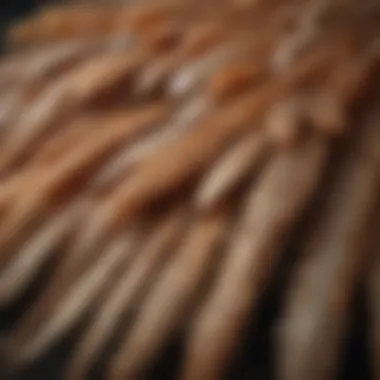

Intro
Mite infestations in chickens can wreak havoc on both their health and overall productivity. These microscopic pests are not just a nuisance; they can lead to serious consequences if left unchecked. Understanding how to effectively combat these foes is essential for anyone looking to maintain a thriving poultry operation. In this article, we will explore various treatments to address mite issues, including both natural remedies and chemical solutions. We'll also cover preventive measures to keep your flock safe in the long run.
Article Overview
Purpose of the Article
This article serves as a comprehensive guide for chicken owners who are trying to navigate the complicated world of mite treatment. It highlights the need for effective intervention and management strategies to keep mites from taking over. By providing detailed explanations and evaluations of various methods, the intention is to empower poultry keepers to make informed decisions that bolster the welfare of their flock.
Relevance to Multiple Disciplines
The implications of mite management stretch well beyond individual backyards. For veterinarians, understanding mite behavior and treatment options can enhance the health outcomes for chickens in their care. For researchers, the study of these parasites can provide insights into their biology and resistance patterns, which could inform future control strategies. Educators can also find value in the latest findings to inform their curriculum, ensuring that aspiring poultry professionals are well-versed in best practices.
Research Background
Historical Context
Mites have been tormenting birds for centuries, yet methods for controlling these pests have evolved significantly. Historically, farmers relied on trial and error—sometimes leading to the use of toxic substances that harmed both birds and the environment. Today, there's a growing emphasis on sustainable practices that minimize such risks while still effectively addressing mite problems.
Key Concepts and Definitions
To comprehend the scope of mite infestations, it's helpful to define key terms:
- Mites: Tiny arachnids that can infest chickens and cause various health issues.
- Infestation: The presence of a significant number of mites that leads to negative effects on the host, in this case, chickens.
- Treatment Options: Various methods available to control mite populations, ranging from chemical pesticides to natural remedies.
By delving into these foundational aspects, we aim to equip our readers with a thorough understanding that sets the stage for the effective treatments discussed in the forthcoming sections.
Understanding Mites in Chickens
Addressing mite infestations in chickens goes beyond just dealing with unwanted pests; it’s about safeguarding the well-being of your flock. Mites can lead to significant health issues and drop the overall productivity of these birds, who offer so much in terms of meat and eggs. Losing sight of how these little creatures can wreak havoc on a poultry farm means not only increased veterinary bills but also lower production rates, which can chew into profits. Therefore, understanding mites is paramount.
Knowing the dangers posed by mites can empower chicken owners to take charge. Prioritizing an informed approach allows for preventive measures to mitigate infestations before they spiral out of control. This article gives insights into the types of mites, their life cycle, and the clinical signs of infestation. Subsequently, you'll have a clearer view of how to tackle these issues effectively.
Types of Mites Affecting Chickens
Fowl mites
Fowl mites, scientifically known as Dermanyssus gallinae, are notorious in the poultry world. They're especially wily due to their ability to multiply rapidly. Adult mites can be black, brown, or even grey, blending in with feathers, making it tough to spot them inderectly. Their bites cause irritation for chickens, which can lead to frantic feather pecking and, in severe cases, stress-induced health problems. What adds to its notoriety is the sheer number they can produce — a single pair can transform into thousands in just a few weeks. Their rapid life cycle contributes to the need for proactive control.
Red mites
Red mites, known as Dermanyssus gallinae, are common culprits in both commercial and backyard flocks. These critters like to make their home in the crevices of perches and nesting boxes. Their reddish-brown color is one of their most defining traits. Their feeding activities typically occur at night when chickens are roosting. As a result, their presence often goes unnoticed until significant damage has already been done. The nocturnal behavior of this species makes it a tricky adversary for farmers, who need to monitor their flocks diligently. Moreover, neglecting their presence can lead to severe health complications in chickens due to reduced blood intake over time.
Scaly leg mites
Scaly leg mites, specifically Knemidocoptes mutans, are a distinct issue in chicken health. They burrow beneath the scales on the legs, causing irritation and resulting in unsightly and painful lesions. This infestation can be particularly damaging as it hampers the mobility of the birds, making it harder for them to reach food and water. However, identifying these mites is often more straightforward than others, due to visible changes in the chicken’s leg scales. While they might not replicate as rapidly as fowl or red mites, the long-lasting discomfort they cause necessitates prompt intervention to maintain overall flock health.
Life Cycle of Chicken Mites
Understanding the life cycle of chicken mites can be beneficial when contemplating treatment options. Knowing what stage the mites are in can help farmers make the right call.
Egg stage
The egg stage of chicken mites marks the start of a new generation. Mite eggs are tiny and stick to feathers or surfaces, making them hard to see. This stage typically lasts around one week, but under optimal conditions, it can speed up. Understanding the egg’s resilience emphasizes the importance of thorough cleaning practices in coop maintenance. Finding and addressing the eggs can prevent an infestation from spiraling out of control.
Nymph stage
Once the eggs hatch, they transition into nymphs. This stage resembles miniature adults, undergoing several molts before reaching maturity. The nymphs will consume blood, contributing to the decline of the host chicken's well-being. Familiarity with these stages enables caretakers to tailor their treatments and ensure maximum efficacy by disrupting this stage and preventing them from maturing into adults.
Adult stage
Adult mites are more recognizable and cause the most damage. With their life expectancy of several weeks, the adults can reproduce swiftly, creating new generations and exacerbating the problem. Unlike their earlier stages, treatment at this point needs to be more aggressive. Recognizing this stage is pivotal as it allows for timely intervention that can save the rest of the flock, ultimately keeping production levels stable.
Symptoms of Infestation
Recognizing the symptoms of mite infestations early on can be a game changer. Awareness of these signs can help you take quick action to deal with outbreaks.
Behavioral signs
Chickens afflicted by mites often show noticeable behavioral changes. You may notice increased restlessness, frequent pecking of their feathers, or even constant grooming attempts as they try to relieve itching. These changes indicate distress caused by bites, and unchecked behavioral alterations can lead to further problems like stress and reduced egg production. Understanding these signs is a beacon for caretakers to observe their flock's well-being closely.
Physical changes
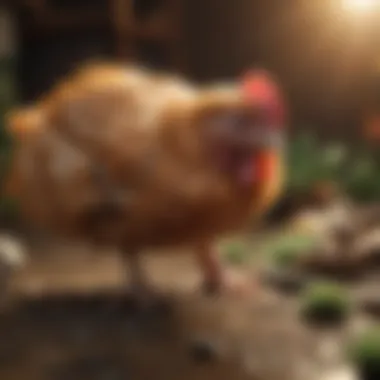
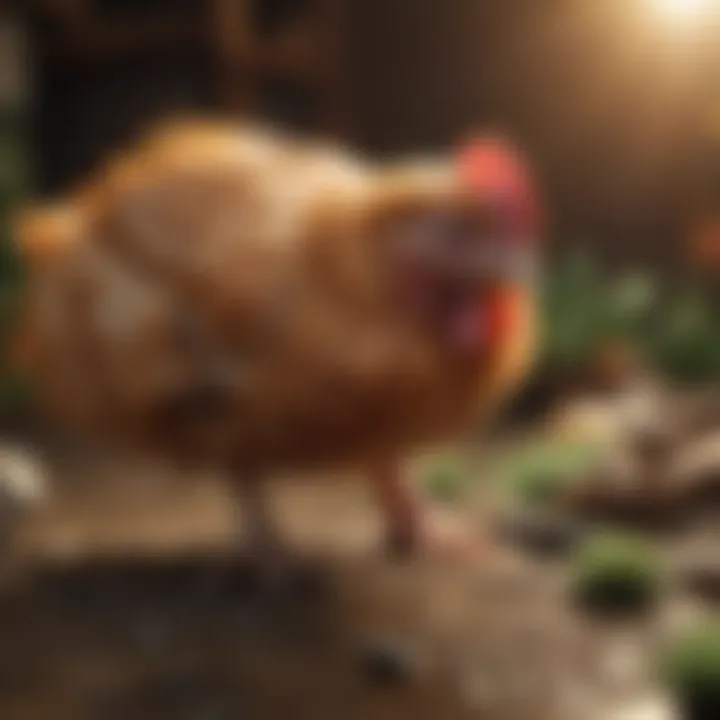
Physical manifestations of mite infestations include feather loss, skin irritation, and potential anemia in severe cases. Chickens with scaly leg mites may present with rough or swollen legs. These changes serve as indicators of an underlying situation that needs urgent attention. Observing and addressing these physical signs promptly contributes to managing overall poultry health.
Production impact
Lastly, the economic consequences can’t go unnoticed. A reduction in egg production due to mite infestations hits one’s pocket directly. The stress on chickens takes a toll on their production capabilities, compounding issues further down the line. A thorough understanding of these impacts, part and parcel of recognizing symptoms, can prove vital in making informed decisions for the flock's long-term health.
Identifying the Right Treatment
When it comes to managing mite infestations in chickens, finding the suitable treatment method is crucial. Mites can plague flocks, leading to stress and diminished health, so having a proper strategy can mean the difference between robust poultry and a struggling coop. Each method, whether chemical or natural, comes with its unique features and implications. Understanding these treatments allows farmers to make informed decisions that best suit their individual situations.
Chemical Insecticides
The use of chemical insecticides remains a common approach in tackling mite infestations. While it may not boast the charm or simplicity of natural remedies, it does offer potent results when time is of the essence.
Organophosphates
Organophosphates are known for being effective in eliminating various parasites, including mites. These substances inhibit certain enzymes that are vital for the insect’s nervous system, leading to their swift demise. One key characteristic of organophosphates is their rapid action, making them a go-to for many poultry farmers. However, they do bring along concerns regarding toxicity, not only to pests but also to birds and humans if mishandled. The effectiveness of organophosphates can't be denied, but they require careful application to ensure safety for both the flock and the individual administering them.
Avermectins
Avermectins are a class of compounds famous for their strong anti-parasitic properties. These substances bind to the nerve and muscle cells of mites, producing paralysis and eventual death. Their main attribute is the persistent effect they have, which can last several weeks after application. This makes avermectins a valuable choice for long-term prevention. Nevertheless, there's a flip side, as continued use could lead to resistance over time. Keeping an eye on usage patterns is essential for maintaining efficacy.
Pyrethroids
Known for their versatility, pyrethroids are synthetic chemicals that mimic natural insecticides found in chrysanthemum flowers. Their rapid knockdown effect makes them especially popular among farmers seeking immediate results. Farmers favor pyrethroids due to their low toxicity to mammals, making them safer options for use around poultry. The downside, however, lies in their shorter residual activity when compared to avermectins, which may require more frequent applications and thus increased labor.
Natural Remedies
In recent years, farmers have become more inclined to explore natural remedies as alternatives to chemical insecticides. These approaches often come with fewer side effects but might demand a bit more patience.
Diatomaceous earth
Diatomaceous earth containts tiny fossilized aquatic organisms that can damage the exoskeleton of crawlers, leading to dehydration and death. Its key characteristic is non-toxicity to birds and mammals alike. With affordability and accessibility making it a popular option among small-scale poultry growers, it’s a go-to for many. However, its efficacy relies on consistent application, and it may take some time to see substantial results.
Essential oils
Essential oils, such as tea tree or lavender oil, show promise in deterring mites. The main beauty of essential oils lies in their natural composition, which leads to minimal adverse reactions in chickens. Their soothing aromas may even contribute to the well-being of the flock. However, the downside is the need for proper dilutions to prevent any potential irritation or allergies. Plus, some oils may be more effective than others, requiring a bit of experimentation.
Neem oil
Derived from the neem tree, neem oil works as both a pesticide and a repellent. The standout feature of neem oil is its ability to disrupt the life cycle of mites, preventing their reproduction. This characteristic makes neem oil a particularly effective choice for ongoing mite management. On the flip side, neem oil can produce a smell that some may find unpleasant, and frequent applications could lead to residue buildup, which may need to be monitored.
Comparing Treatment Efficacy
When considering treatment options, evaluating the effectiveness across various factors is imperative.
Cost analysis
Understanding the financial impact of different treatment methods is instrumental for any poultry owner. Chemicals might have a higher upfront cost but could save in long-term health. In contrast, natural remedies generally have lower price points but might require more applications, altering the initial financial outlook. It’s about finding the right balance.
Time effectiveness
Time is often of the essence when dealing with infestations. Chemical options like pyrethroids offer rapid results, whereas natural solutions might need a bit of time to kick in. This factor can affect not just the treatment choice but also how quickly a poultry owner can expect to return to normal, healthy conditions.
Potential side effects
An essential consideration that cannot be underestimated is the side effects associated with treatments. Chemicals may come with toxicity risks and require protective measures during application. Natural remedies, while generally safer, may still elicit side effects if not used correctly. Knowing the implications of each treatment allows for a more informed decision that aligns with the farmer's goals.
Application Techniques for Treatment
When dealing with mite infestations in chickens, the application techniques are paramount. These methods not only ensure the efficacy of the treatments used but also affect the overall health and productivity of the flock. Proper technique can significantly enhance the penetration of the treatment, ensuring that mites, which often hide in crevices and under feathers, are effectively targeted. In this section, we will explore various methods of application, outlining the distinct advantages and considerations each offers.
Spraying Methods
Manual vs. mechanical spray
When it comes to applying treatments, you have two main choices: manual and mechanical sprayers. Manual sprayers offer a hands-on approach, allowing precise control over where insecticides or natural solutions are applied. This feature is valuable when treating small areas or during focused sessions on individual birds. On the flip side, mechanical sprayers can cover larger areas quickly, making them useful for farmers managing bigger flocks.
A key characteristic of manual sprayers is their adaptability. Users can adjust the nozzle for finer sprays, which can be beneficial for targeting specific areas without overspraying. However, manual spraying can be labor-intensive and may require more time, especially for larger operations.
Mechanical sprayers, such as backpack models, can distribute treatments uniformly but are often limited in terms of control. This lack of precision can lead to some areas being treated more than others, presenting potential risks for birds if the treatment is concentrated.
Frequency of application
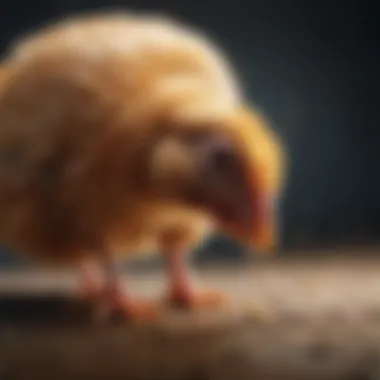
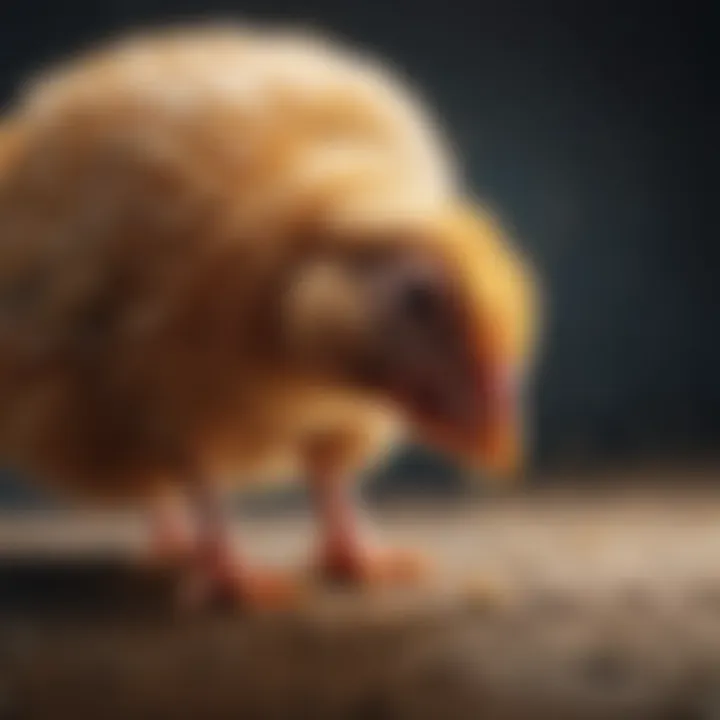
The frequency with which treatments are applied is crucial in the management of mite populations. Over-application can lead to treatment resistance, while under-application may not effectively eradicate the infestation. Generally, chemical insecticides will need applications every 7 to 10 days until the infestation is under control. Natural remedies like diatomaceous earth might require more frequent applications, especially after wet conditions that could wash it away.
Establishing a consistent application schedule can help mitigate the impact of mites over time. It can be beneficial to align treatment frequency with routine health checks of the flock. However, this need for regularity requires careful record-keeping to ensure treatments are not missed, leading to an escalation of the issue.
Coverage areas
Understanding coverage areas is essential for effective mite control. When applying treatment, it is crucial to focus not just on the birds but also on their environment, including nesting boxes and perches. Mites often linger in these areas, so thorough coverage is paramount. An effective method might involve treating at least 1 meter around the perches and nesting boxes to catch any straying mites.
A broad coverage area allows for greater protection and, ideally, a reduction in overall mite populations. However, this increased scope may demand more resources, such as time, product, and labor. In doing so, it’s important to ensure that all surfaces are accessible and that the treatment can be applied effectively without endangering the chickens.
Dusting Techniques
Choosing the right dust
Selecting the right type of dust can have a significant impact on treatment efficacy. Not all dusts are created equal; some are specifically designed for poultry while others may be suitable for other pests. A quality choice might be a diatomaceous earth specifically formulated for animal use. The active ingredient should be effective yet safe for the flock, minimizing any potential side effects.
Some dusts also have moisture-retaining properties, which allows for a more prolonged effectiveness. However, the dust must be light enough to disperse properly without clumping, which can reduce its efficacy. Therefore, the choice of dust applies not only to immediate impact but also to sustainability over time, influencing long-term management practices.
Application methods
There are various methods for applying dust treatments, with options ranging from hand dusting to using specialized puffers or dusting machines. Hand dusting provides great control but may be less efficient for larger farms, while dusting machines can spread the material evenly over a wider area, ensuring comprehensive coverage.
Each method has its unique pros and cons. For example, while hand dusting allows for precision, it may expose the handler to dust inhalation, making it advisable to use respiratory protection. Machines can efficiently cover large areas but may sometimes distribute too much product if not calibrated correctly.
Safety precautions
When applying any mite treatment—whether spray or dust—safety should always be front and center. Protective gear, including masks, gloves, and goggles, is essential to safeguard against inhaling chemicals or dust. Having a clear plan for evacuating birds from treated areas will also reduce stress and potential harm to them during the process.
Additionally, it's crucial to read and follow product labels carefully, as they often contain specific advice regarding dosage and handling. Pay close attention to any withdrawal periods recommended for poultry products to ensure safety and bird health. Taking these safety precautions not only protects the chickens but also ensures the farmer's well-being.
Incorporating Treatments into Routine Care
Integrating mite treatments into the regular care routine of chickens is a sound strategy. This approach fosters an environment that allows for proactive management rather than reactive measures, increasing the effectiveness of all treatments applied.
Regular inspections
Consistent inspections allow for early detection of mite activity. It’s beneficial to examine the flock at least weekly for signs of mites, such as excessive scratching or visible skin irritation. Regular inspections foster awareness of the overall flock's health status and help catch issues before they escalate.
A unique feature of routine inspections is that they provide an opportunity to gauge treatment effectiveness. Making notes on what is observed over time can yield insights into whether the selected treatments are working or whether alternatives need to be explored.
Integrating treatments with health checks
Combining health checks with mite treatment schedules capitalizes on the existing routines of chicken management. Establishing a regular health check ensures that any signs of mite infestations do not go unnoticed and that treatments are timely and efficient. This integrated approach facilitates a more thorough understanding of each bird's condition and promotes overall flock health.
The beauty of this method lies in its dual benefit; health checks provide insights into the overall health of the bird while simultaneously managing mite problems. However, flock owners must be disciplined to maintain schedules and document their observations clearly.
Record-Keeping
Lastly, keeping meticulous records is invaluable in monitoring mite treatments and their effectiveness. Detailed logs should include when treatments were applied, which type was used, and any observed changes in the condition of the birds. This information can simplify the evaluation of treatment effectiveness over time.
Moreover, thorough record-keeping can inform better decision-making for future treatments, creating a cycle of continuous learning and improvement. While this task requires careful attention and discipline, its long-term benefits cannot be underestimated in ensuring a healthy chicken flock.
Preventive Measures for Mite Control
Mite infestations in chickens can wreak havoc on both the health of the flock and the pocketbook of the chicken owner. Prevention is often seen as the best line of defense, and understanding how to implement effective measures can save time and resources in the long run. The focus here will be on various strategies that can help lay down the groundwork to keep mites at bay. Emphasizing proactive actions can be more efficient and less stressful compared to dealing with an all-out infestation.
Biosecurity Practices
Isolation of new birds
Isolating new birds before introducing them to the flock is a crucial step in maintaining overall chicken health. When new birds are brought into the farm, there's always a risk they may carry mites or other parasites that could disrupt the well-being of the existing flock. By keeping them separate for a minimum of two weeks, you allow time to monitor for any symptoms of infestation.
This practice is beneficial because it acts as a quarantine period. If any signs of mites do show up, you can treat those new additions without risking the entire flock. A key characteristic of this approach is the simple yet effective nature of separation. However, it does require commitment and awareness about what to look for regarding mite infestations. The only downside is that it may delay the introduction of potentially fine additions to the flock for a select period, but the long-term benefits usually far outweigh this.
Regular cleaning routines
Implementing regular cleaning routines is another cornerstone of mite prevention. A clean coop doesn’t just look good; it reduces the habitats where mites thrive. Regularly cleaning nesting boxes, dust bathing areas, and general coop spaces can help in the fight against these pests.
The key characteristic of such routines is their ability to break the life cycle of mites. By eliminating any organic matter, bedding, or waste where mites might hide or breed, you are directly tackling the problem. This is a popular choice among chicken owners due to its simplicity and cost-effectiveness. The unique feature here is the routine aspect; forming habits around cleaning can reduce the effort of pest control greatly. On the downside, however, it does require a regular commitment, which can be sporadically overlooked in the hustle of everyday farm tasks.
Limiting visitor access
Limiting access to visitors is often an overlooked but effective preventive measure. The more people that come close to your flock, the higher the chances of introducing unwanted pests. Visitors could unknowingly bring in mites from other locations or farms.
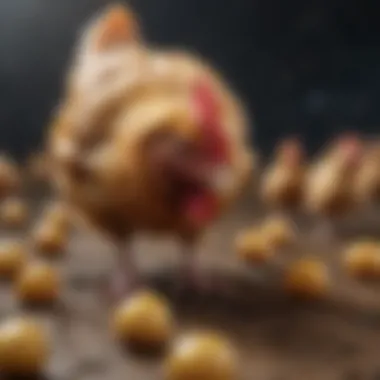
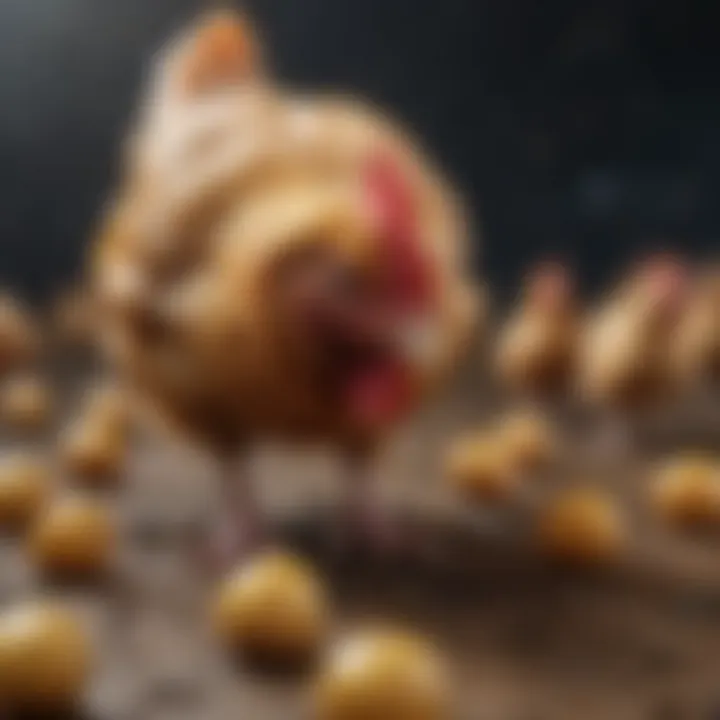
This practice stands out for its preventative capabilities against a multitude of potential threats. By enforcing stricter rules about who can and cannot visit your coop, you effectively reduce the risk of inputting new parasites. This strategy might be seen as overly cautious by some, but it’s a pragmatic choice for those serious about biosecurity. However, this can also mean missing out on educating willing friends or fellow chicken owners who want to learn about your practices firsthand, so some balance must be struck.
Environmental Management
Proper nesting box maintenance
Maintaining nesting boxes goes hand-in-hand with a clean environment. Chickens spend a lot of time in their nesting boxes, providing ideal locations for mites to take hold. Regular oversight of these crucial areas ensures they remain mite-free.
The key characteristic here involves high-frequency maintenance to avoid buildup of waste or leftover bedding. Many find this a practical strategy since it doesn’t require specialized knowledge. However, the unique feature lies in its simplicity; just a quick inspection can prevent more extensive problems. Neglecting this can lead to a more significant workload down the line.
Use of dust baths
Dust baths are not just a quirky chicken behavior; they serve a functional purpose in pest control. Chickens naturally use dust baths to groom themselves and rid their bodies of lice and mites.
The beauty of incorporating dust baths is their natural appeal to chickens. Owners who provide a designated area filled with dust or sand make it an attractive option for chickens to engage in regular maintenance routines. This is a favored choice due to its effectiveness and low-cost installation. However, the downside is that it must be kept clean and dry; if the bedding is wet from rain or cleaning, it won’t be effective against pests.
Temperature regulation
Proper temperature regulation in the coop is critical in preventing mite proliferation. Mites tend to thrive in specific conditions, and maintaining a hotter or cooler environment can deter their growth.
The strength of temperature regulation lies in its holistic nature; it can affect not just mite activity but overall chicken health. Many consider it a vital choice that directly influences the productivity of the flock. Though it requires some investment in heating or cooling solutions, keeping chickens comfortable also leads to better egg production. Yet, if not monitored carefully, it can lead to stress if temperatures fluctuate too much, provoking other health concerns in chickens.
Monitoring and Surveillance
Regular flock assessments
Conducting regular assessments of the flock goes beyond just a casual check. This practice is about actively looking for signs of mite infestations before they become problematic. Regular checks help you not only catch infestations early but also keep track of the overall health of the flock.
The notable characteristic of this strategy is its active approach to prevention. Many find this a beneficial choice since it requires minimal resources yet provides maximum rewards, alerting owners to any trends in mite population. The disadvantage might be the time it demands, especially if you own a larger farm, but the trade-off can lead to peace of mind and healthier chickens.
Utilizing pheromone traps
Pheromone traps utilize mites’ natural behaviors against them. By luring them into traps with attractants, you can monitor mite presence within your flock. This method promotes a deeper comprehension of how infestations can build and allows for timely interventions.
Pheromone traps strike a balance between scientific insight and practical application; they provide data and a method for controlling mite populations. This is a popular approach because of its dual action—monitoring and pest control. A unique aspect is that they can be set up in various areas, making them versatile. The downside is that they require periodic checking and can be less effective if too few traps are used.
Data recording of mite activity
Lastly, keeping a detailed record of mite activity can be invaluable. Owners can track patterns and monitor which treatments have been effective or not.
The primary feature of this strategy lies in its analytical approach. Having evidence-based data can help in decision-making processes concerning treatment and maintenance. Many see this as a beneficial tool for serious chicken farmers. The only downside might be the initial learning curve in setting up a system that is easy to manage, but in the long run, the effort pays off with better-informed actions.
Impact of Mites on Chicken Welfare
Mite infestations are not just a nuisance for chickens; they can profoundly affect their overall welfare. Understanding the impact of these parasites is crucial for poultry owners who aim to maintain a healthy, thriving flock. When mites invade a coop, they can bring a slew of challenges that extend beyond mere irritation. This section illuminates the psychological and economic consequences that arise from mite infestations, emphasizing the necessity for proactive management.
Psychological Effects on Chickens
Chickens, like any other animal, exhibit stress responses to threats in their environment.
Stress responses
When mites invade, the stress levels within the flock can significantly rise. Chickens may become jittery and agitated. As they jockey for space and comfort amidst discomfort, their prioritization of daily activities shifts, with decreased feeding or preening often observed during such infestations.
The link between stress and overall health in chickens is well-documented; chronic stress can lead to hormonal imbalances, impact egg production, and diminish the immune response. Thus, it's crucial to counteract the effects of these parasites promptly. Stress management therefore becomes a key factor in poultry welfare, making early interventions advantageous and necessary for keeping chickens healthy.
Behavioral changes
Behavioral changes are another observable effect when chickens are infested with mites. Chickens commonly engage in dust bathing to alleviate itching from these pests. However, severe infestations can lead to altered social behaviors, such as aggression and withdrawal.
The importance of these behavioral shifts cannot be overstated. They can disrupt the social hierarchy in the flock, leading to further complications like pecking orders being overturned or increased bullying among hens. This becomes a double-edged sword; while some level of aggression may temporarily drive off the mites, it disrupts the gentle social dynamics that are so integral to chicken community living.
Impact on social dynamics
The social fabric of a chicken flock can unravel when stress from mites comes into play. With altered behaviors, excess stress can lead to heightened aggression and mock pecking, which results in injuries and added stress within the group. Social cohesion tends to weaken in highly infested environments, causing fractures that might lead to long-term issues if not addressed. The dynamic shifts impact overall flock productivity, and any disruptions can result in lower egg production rates.
Economic Consequences
The economic implications of mite infestations are stark and multifold, making it a crucial aspect of any discussion surrounding chicken welfare.
Reduced egg production
The most straightforward economic consequence of mites is the reduction in egg production. Poorly kept hens, suffering from constant irritation, are less inclined to lay. The numbers can be staggering; a well-managed flock may lay eggs consistently, but an infested one could see a significant drop in both quantity and quality. The financial burden resultant from reduced production can hit small-scale farms particularly hard, impacting profitability immensely.
Cost of treatment
Treatment options vary widely in cost, and the choice between chemical and natural remedies can make a substantial difference in a flock owner's budget. Chemical treatments might require repeated applications and consulting with a vet, while natural remedies may call for bulk purchases of supplies. Each option carries its own merits and drawbacks, depending on the level of infestation and the commitment of the owner to long-term management strategies.
Long-term flock health
Long-term flock health is hindered if mite infestations aren’t adequately dealt with. Recurrent infestations can lead to chronic health issues, which spiral into more extensive veterinary care and additional costs. Mites don’t just bring temporary discomfort; they can compromise the immune systems of chickens, making them more susceptible to other ailments. Owners face a dual challenge of making immediate interventions while considering the long-term impacts on their flock’s health, ultimately influencing their operational success.
Maintaining a healthy environment for chickens is a non-negotiable aspect of poultry management. Failing to address mite issues can lead to escalating problems that affect both flock welfare and the economic viability of chicken farming.
Maintaining a healthy environment for chickens is a non-negotiable aspect of poultry management. Failing to address mite issues can lead to escalating problems that affect both flock welfare and the economic viability of chicken farming.



